A Fall from Grace
Listen to this story as read by the author.
One interpretation of the facts is that Jean-Michel Houvrée produced his most arresting art only after he had died.
Born in 1694 in Ariège-sur-Mentouin, a village a few kilometres north of Carcassone, to a moderately prosperous inn-owner and his wife, he was brought up a Catholic but embraced Jansenism in his early twenties. He was educated at the local village school until the age of fourteen: an indifferent scholar in the classroom, he was an avid student of the natural world. He was a good boy, obedient to his parents, kind to his friends, open to the loving grace of God. He had big feet, thick black hair, dark brown eyes, a shy smile. Any free time he had after assisting his father in the inn, he would wander the sun-baked lanes and fields carrying cheese and home-baked bread in his bag, beneath a sky colour-washed fresh each day by his Creator.
To Jean-Michel, nature was a thin veil through which the divinity of God could be glimpsed and, if you unfurled your senses, touched. A field of corn stalks rilling in the wind as if stroked by an invisible hand. A ball of maggots frothing in the sunken stomach of a wolf-savaged ewe. Olive tree branches bowing in ceaseless supplication to the breeze. Cloud bellies roasted red by the charcoal-hot earth at dusk. All these things the boy saw, imbibed, and thought upon. And then he began to draw them. But it was not the case that the Creator, his Creator, supported his fleshy hand in Her invisible one and guided his fingers. But nor could it be said that the patterns of expressive and sinuous lines, the deft and sympathetic shadings, were his own renderings of that which he saw in the material world. Instead, it was as if they were copied by him from a master sketch which had already faithfully reproduced their divine and therefore true character, a celestial blueprint to which he alone had access, he alone could see in his spirit’s eye.
His parents came across drawings left lying around. The abandoned well in the field next to the parish church, haunted by the ghosts of those who had used it down the centuries; Francine Moutard, his young cousin, her head to one side, gazing softly, indulgently at the kittens she cuddled in her arms but with the whisper of something else – contempt perhaps – hovering on her lips; the split-second stare over his shoulder of a male osprey – and this time there was an unmistakable superiority in the bird’s black-button glare. An untutored but instant appreciation by his parents of the boy’s gift. The inn served a main road and was busy with those who had occasion to travel in those days: grain and cloth merchants, farmers’ agents, tax collectors, travelling salesmen. His father made enquiries of those who passed through and was given the name of a local painter living in the next town who was getting on in years and might require an apprentice.
The next Monday, a warm wind tugging at their hats and travelling cloaks, Jean-Michel and his father rode over to see the painter. Mathieu Géroux was desperately busy, inundated with orders from the local bourgeoisie for family portraits, religious scenes, and landscapes. But cataracts were crawling slowly over his eyes; his hands and wrists stiffening with arthritis as if made of papier-mâché, drying in the sun. Barely looking at the boy’s drawings, he hired him on the spot to start there and then and Jean-Michel said goodbye to his father and started as the old painter’s assistant.
Mathieu lived and worked alone. The boy slept on blankets in the corner of the old painter’s barn-like studio. When, a couple of years later, Mathieu’s legs became too unsteady to climb stairs, his bed was moved to the studio and Jean-Michel slept on a mattress in the vacated bedroom. The painter kept the boy busy: he rose at dawn, swept the studio, milked the goat, fetched the bread and eggs, and prepared the porridge before the painter arose. During winter, he had to relight the stove in the studio.
At first, he was confined to painting backgrounds: the smoky burgundy backdrop to a portrait of the local bishop, the sunlit benchtop for the still life of summer fruits, the blue undulating hills behind the family scene of Madonna and Child, the commissioner of the painting kneeling in attendance. But as soon as his talent became clear, he was invited to paint the hand-held prayer book, the burnished platter, as well, until, before long, he had gravitated to including the subject of the painting itself, where he demonstrated such an intuitive understanding allied with such technical mastery (the stubble speckling the episcopal jowls; the precisely reticulated thorax of the peach-gorging fruit fly) that Mathieu would stare at the finished work with wonder in his milky eyes. Within a couple of years, without any formal acknowledgement or ceremony, their positions were reversed: Mathieu met the patrons and delivered the finished work of art, but the boy prepared the charcoal outline and executed the most complex and demanding elements of each work, relegating the old painter to those parts of the final picture which the eye passed over without seeing or absorbing.
Word spread of the high quality of work coming from Mathieu Géroux’s studio, although the more informed among his clientele correctly attributed this to Mathieu’s young apprentice rather than to the old painter himself. As the fame of the Géroux studio rippled across the south of France, its products began to change hands for a value in excess of that paid for their creation.
When Mathieu died from consumption nine years after the boy had come to live with him, Jean-Michel, now twenty-four, had become the son the painter never had; if he inherited, under the old painter’s will, his name and property (the cottage across the yard from the studio had been replaced by a double-fronted stone-clad villa with gardens and an orchard), the prosperous business run from the studio was already in effect his. By this time, the household retained a small group of servants, a couple of young women for the kitchen and the house, and an older man for the grounds. Jean-Michel remained unmarried, however. He worked long hours, starting at dawn and continuing long into the night, the oil lamp at the unshuttered studio window a solitary light twinkling in the vast darkness, as though a star had fallen from the heavens and landed in the black folds of earth. But no matter the number of commissions demanding his attention, he walked the countryside for an hour each day whatever the season or weather, welcomed visits from his mother (his father having died shortly after he left home), and each Sunday worshipped at St Pierre’s. If asked, he would have said he was no more than, but also no less than, an involuntary instrument through which the Creator’s presence in each particle (it was too soon to think in terms of atoms) of Her Creation was captured and celebrated. He would not have accepted, or even understood, the romantic idea of an artist as someone who partook of a self-motivated, self-idealised human act of creation.
The old painter had been of the Jansenist persuasion: his Bible never strayed far from a copy of Jansen’s Augustinus. It had been axiomatic to Mathieu that although life was a gift given to all, divine grace must be a gift given to less than all. How many had received the gift of faith he had not been in a position to speculate, but one could not insist on the right to be saved any more than one could insist on possessing the artistic ability of a Jean-Michel. Towards the end of his days, Mathieu had joined a group of parishioners drawn from the better-educated sort who met at one another’s dwellings to read and discuss the New Testament through the prism of Jansenist theology. The meetings were not secret, but they were not advertised, and attendance was by invitation only. Jean-Michel had accompanied him to these meetings, and after the old painter’s death he continued to attend. He spoke less at the gatherings than Mathieu had done but listened more. On the evening when it was his turn to host, one of the young women closed the shutters in the front parlour, drew the curtains, and lit the oil lamps before the guests assembled. Bread, cheese, and wine were served and, once the theological conversation had commenced, the parsing of the Gospel of St John and the First Letter of St Paul to the Corinthians continued long into the night.
One evening in July 1725, when Jean-Michel was thirty-one, he was returning home from such an evening, held at the château of a wealthy neighbour, a merchant who lived a few kilometres from his house. A warm breeze, spiced with lavender and thyme, stroked the trees and shrubs as his horse followed a track painted luminescent by the moon. The horse had been unsettled from the start, swinging its head from side to side as if to shake off an invisible hand on its head. About thirty minutes into the journey, as Jean-Michel was passing through a stand of oak trees, a colony of bats exploded from the branches above his head and to his right and with a flurry of high-pitched clicks and leathery flaps swept across the path in front of the horse, causing it to snort and rear on its hind legs and throw Jean-Michel to the ground where he hit his head on a tree root. At dawn the following day, noticing the horse had not been stabled the previous evening, the groundsman set off along the path to the merchant’s house. About halfway there, he found Jean-Michel lying unconscious on the ground, barely breathing, a shallow crater of shattered bone and grayish-purple tissue denting the back of his head. There was no sign of his horse.
A cart was fetched, and Jean-Michel laid on blankets in the back and accompanied on his journey home by the groundsman, the physician and his servant, and the cart’s owner, each of whom walked with one hand on the cart to try and steady its juddering progress along the stony ground, to alleviate if only to that small extent the discomfort and physical indignity of the injured painter. When the party reached the house of Jean-Michel, the body was placed in the front parlour and the physician told the assembled servants that the artist was no longer breathing and that he would contact the priest.
So much is agreed history, pieced together from public registries, accounts found in personal diaries, the personal recollections of witnesses, and informed and sympathetic supposition. We can say: this much was known of the life of Jean-Michel Houvrée. What follows is more uncertain: facts are contested, and interpretations disputed.
Eighteenth-century French parochial records are singularly unreliable, but there are no local records of Jean-Michel’s death in 1725. There is no evidence of a funeral service being held around that time, either. Instead, a Monsieur Houvrée (no first name given) is recorded in the annals of the local parish as dying from pneumonia in 1756 (although again there is no record of a requiem mass or other religious service being held to commemorate the death).
In early eighteenth-century France, the keeping of records of commercial transactions was not common; the footprint a moderately wealthy member of the bourgeoisie would leave in local records was inevitably fragmentary. From the scarce records that survived, however, in 1725, it appeared as if Jean-Michel disappeared from the social intercourse of his community: no further record of attendance at church or participation in the Jansenist discussion groups existed; no further record of him purchasing charcoal, vellum, pigments, or varnish from his usual suppliers survived. So far as we know, no further visits were made to the local tailor, physician, or barber, and no requisitions made from his vintner or butcher. Indeed, there is no evidence that anyone ever saw Jean-Michel Houvrée in person again after 20 July 1725. Finally, most tellingly for those who would argue that the painter was seriously physically incapacitated or even died on that date, there are no more entries, whether sketches or text, after that date in those of his notebooks and journals which have come down to us. The last known entry which has survived is dated 18 July 1725, a couple of days before he was thrown from his horse.
Tales which were seed-planted in the mulch of village gossip and speculation took root and over time grew into a popular mythology that formed part of the culture and history of a region, of a country. There are accounts of sketches for portraits only taking place at night, the subject sitting at one end of the studio, illuminated by a phalanx of candles, the rest of the studio in darkness through which a phantom-like, cloaked figure could be intermittently discerned. After an hour or so, the servant who had shown the person to his or her seat would return and see that person out. Commissions were no longer made in person, only in writing by way of letter left at Monsieur Houvrée’s residence; completed works were left in the parlour to be picked up, without meeting or sight of the artist. Of course, it is difficult to know how much credence should be given to such accounts; how much is grounded in fact, how much embellished by imaginative fancy.
The evidence that Jean-Michel survived the consequences of the fall and in a state of health that allowed him to continue working really lies in the extraordinary series of paintings which were produced in the decade or so after 1725 and which are believed to have been produced by him. The so-called peintures étonnantes (Amazing Pictures) constitute a collection of portraits, landscapes, still lifes, and religious pictures which, though ostensibly conventional in theme and execution, contain strange, bizarre, and wondrous objects, elements, and images placed alongside or embedded within the ordinary and quotidian. As one art historian later commented, it is as if the nightmarish, hallucinogenic creatures of the world of Hieronymous Bosch had invaded and taken occupation of the calm, ordered world of Vermeer; what is most striking about the peintures étonnantes is the cool, forensic blending of the fantastical and the formal.
The features of the tax collector in Portrait of Monsieur Fregier are those of a prosperous, humane, middle-aged tax collector, and the painter has captured the weary self-knowledge in his eyes. He has also captured a long, black, sinuous tongue, forked at its tip, lolling from Fregier’s half-open mouth.
In Visit of the Magi, the traditional gifts of gold, frankincense, and myrrh proffered by the kings have been replaced by a meticulously delineated sleeping bat, a pinkish-grey object veined with red threads about the length of a forearm subsequently identified by veterinary anatomists as a skinned fox, and a nacreous, cloak-like object, draped over two extended arms, seemingly gelatinous in texture, which has appeared to more than one marine biologist to be a dead jellyfish. There is no hint of awareness of the incongruous nature of their offerings in the reverential gaze of the regal visitors.
It is common to include butterflies, wasps, flies, and snails in still lifes of flowers (see, for example, the floral still lifes of the Dutch artist Balthasar van der Ast (1593/94–1657) which are festooned with a veritable cornucopia of insects). But Still Life with a Bowl of Flowers is dominated by a giant beetle, bigger than a human head, drawn in microscopic detail, squatting centre stage in front of the fruit bowl. Interestingly, entomologists have been unable to identify the exact species of beetle in the painting, and expert opinion is divided on whether the artist made a mistake in painting the beetle or conjured its features out of his imagination or whether the beetle was represented accurately but in the intervening years had become extinct.
Perhaps the most famous peinture étonnante is the most unnerving: The Investiture of Dr Regonard, now in the Louvre. Doctor Regonard stands looking out of the canvas at the viewer with a level gaze, resplendent in blue velvet frockcoat, cream linen breeches, and gold buckled shoes, caught in a shaft of cool daylight from windows to his right. Behind him and to his left is a full-length mirror in which the back of the doctor is reflected. He is blocking the light from the window, so the back of his frockcoat and his breeches and stockings are in shadow. But as your eyes adjust to the gloom, there at the bottom of the mirror, on either side of his legs, facing out of the mirror, squats a naked homunculus with eyes like black marbles, pointed nose and wide, lipless mouth, grinning at the viewer, its arms wrapped around the leg nearest to it. In an instant your eyes switch back to Doctor Regonard before the mirror: did you miss them the first time you looked? But no, the imp-like creatures are not there; they can be seen only in the shadows of the reflection, their eyes fixed on you. You look again at the doctor’s face to see whether it betrays any consciousness of these malevolent entities, seen only in the mirror hugging his legs. This time you think you perceive a tightness to the set of his mouth; what seemed like calmness in the eyes now seems like deadness, and you realise there is no animating spark, no twinkle of light deep in these eyes; they are dark tunnels with utter blackness at their end.
The overwhelming consensus currently in place among art historians and scholars is that the peintures étonnantes were indeed painted by Jean-Michel Houvrée. This consensus was first established by the publication in 1882 of Charles Gilliment’s biography of the painter, which argued convincingly that there are continuities of technique, of tint and colouration, even of brush stroke, between the peintures étonnantes and Houvrée’s earlier work that transcend any divergences in style or subject matter. The fact that no sketches or outlines for any of these works of art were found among Jean-Michel’s papers was ignored, as was the fact that entirely different pigments, oils, and varnish were deployed by the artist in these paintings from those used in any of his previous works. (On this last point, it is worth noting that, to this day, art historians who specialise in historical painting techniques and materials have not been able to trace where the pigments and oils used by Houvrée in these works of art were sourced – see Susan Manzer’s masterly survey of this topic in ‘Questions concerning the origins of materials used in the peintures étonnantes of Jean-Michel Houvrée’ from a symposium on Historical Painting Techniques, Materials and Studio Practice held at the University of Neymoller, the Netherlands, 18–20 September 1989.)
It is true that the otherworldly, occult, and extraordinary elements of the peintures étonnantes constitute a radical departure in terms of subject matter from Houvrée’s previous paintings: but they constitute a significant break from most art of that time. It is tempting to exaggerate those facets which speak of a modern, even post-modern, sensibility, or which presuppose an ironic, knowing detachment on his part. But equally, there is no denying that sense of a mind awakened to a new consciousness of the discombobulation to be afforded by the radical reordering of reality and the introduction of images which convey pain and despair just as much as they speak of a deracinated jeu d’esprit.
The appreciation of these striking paintings has been transformed in recent years by the publication in 1999 of Professor Aiden Cumber’s A Fall from Grace: The altered visions and living nightmares of the peintures étonnantes of Jean-Michel Houvrée. His argument is that when Jean-Michel fell from his horse in July 1725, he incurred a traumatic brain injury to his occipital lobe, that part of the brain which is responsible for visual perception and visuospatial coordination. Consequently, the way Houvrée experienced reality visually, and the way he formulated visual representations, was profoundly altered. This accounts for the strange, exotic, or incongruous objects and the disjointed sense of perspective which thereafter are prominent features of his work.
According to Cumber, these ‘altered visions’ (as he termed them) were entirely involuntary in origin and Houvrée had no control over them: once they had formed in his mind, he simply had to incorporate them in his paintings the best way he could. Cumber’s thesis is that this should not be seen as a deficit: the fall did not cause any diminution of Houvrée’s ability as an artist. Rather, it enhanced Jean-Michel’s artistic repertoire and expanded his mental faculties, in the same way mescaline and LSD would do for later generations of artists. This explanation has persuaded some more than others, but whatever the explanation for the radical departure in Jean-Michel’s artistic vision, it clearly did not come without some cost to the painter, as the solitary, reclusive, and shadowy life he adopted after his injury suggests.
Whatever the truth about Jean-Michel Houvrée’s life and art after his fall, we may perhaps give him the last word as expressed in the final work he is believed to have painted. Portrait of the Artist Sitting at a Table is the only self-portrait Jean-Michel Houvrée is believed to have produced. It has been tentatively dated as 1754 when the painter was sixty. An even, limpid light floods the picture. He sits on the left of a round table facing the viewer, dressed in nondescript black clothes, his eyes disconcertingly looking up at something out of the picture, just above the viewer’s head. The eyes are caught at the exact moment they have flicked up, and this has an extraordinary effect on the viewer; the natural response is to involuntarily look up to see what has caught the painter’s eye. Whatever it is delights him; the eyes are suffused with a gentle, joyous humour. The face is expressionless, so this effect is achieved solely by capturing a look in the eyes: a stunning technical accomplishment. His hand rests palm up on the table, as if ready to hold the hand of whoever is going to sit next to him at the table. For the seat on the other side of the table is empty. Except that looking at the way Jean-Michel leans in, the way his hand is held out, more than one viewer has had the curious sensation that there is someone already sitting in the chair next to Jean-Michel, holding his hand, perhaps also looking up at what has caught his eye.



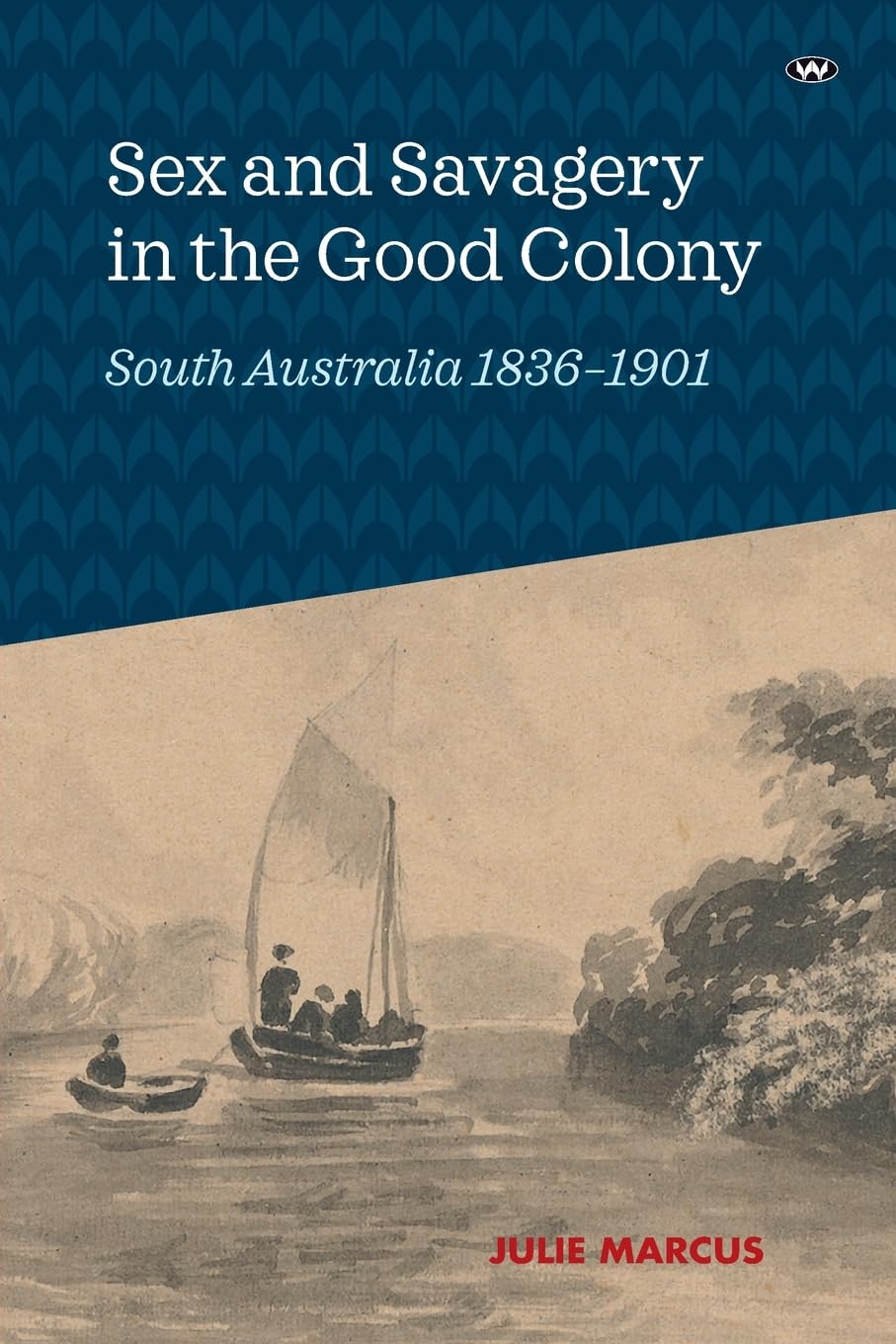
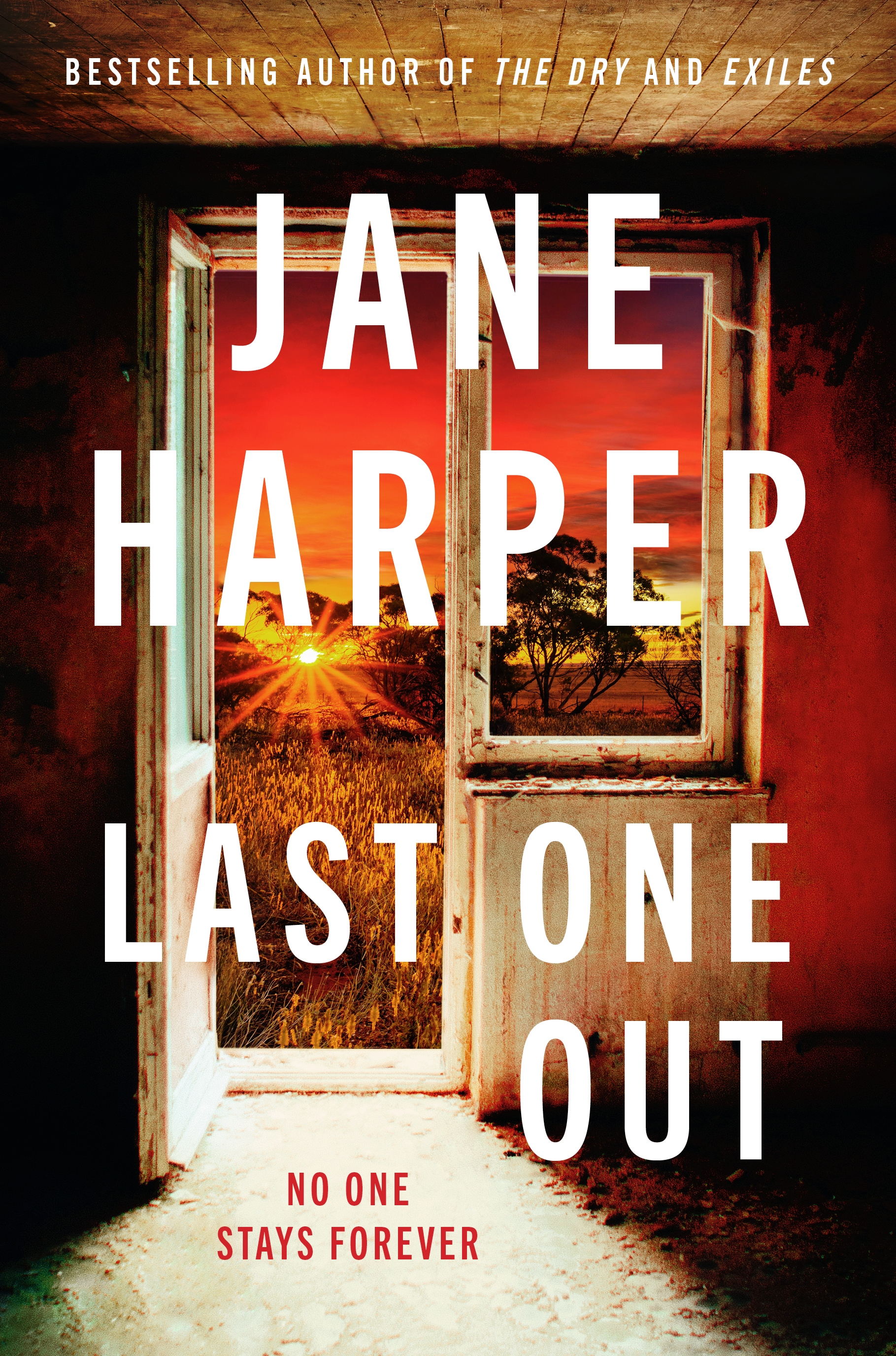
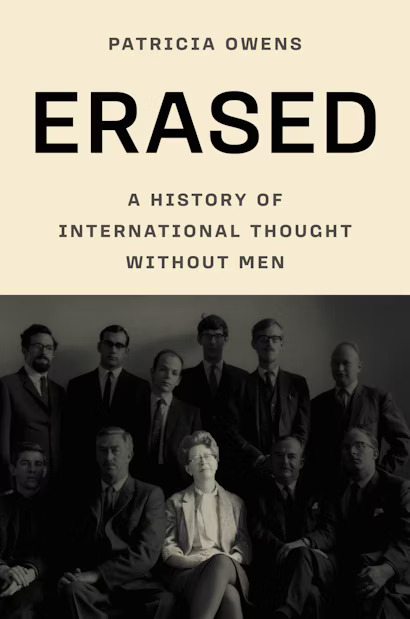


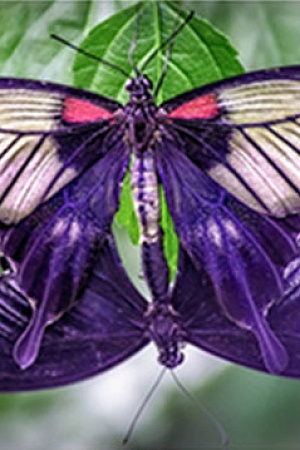

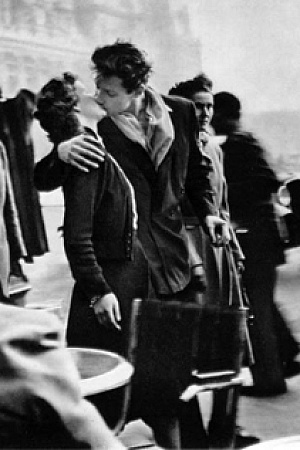
Leave a comment
If you are an ABR subscriber, you will need to sign in to post a comment.
If you have forgotten your sign in details, or if you receive an error message when trying to submit your comment, please email your comment (and the name of the article to which it relates) to ABR Comments. We will review your comment and, subject to approval, we will post it under your name.
Please note that all comments must be approved by ABR and comply with our Terms & Conditions.